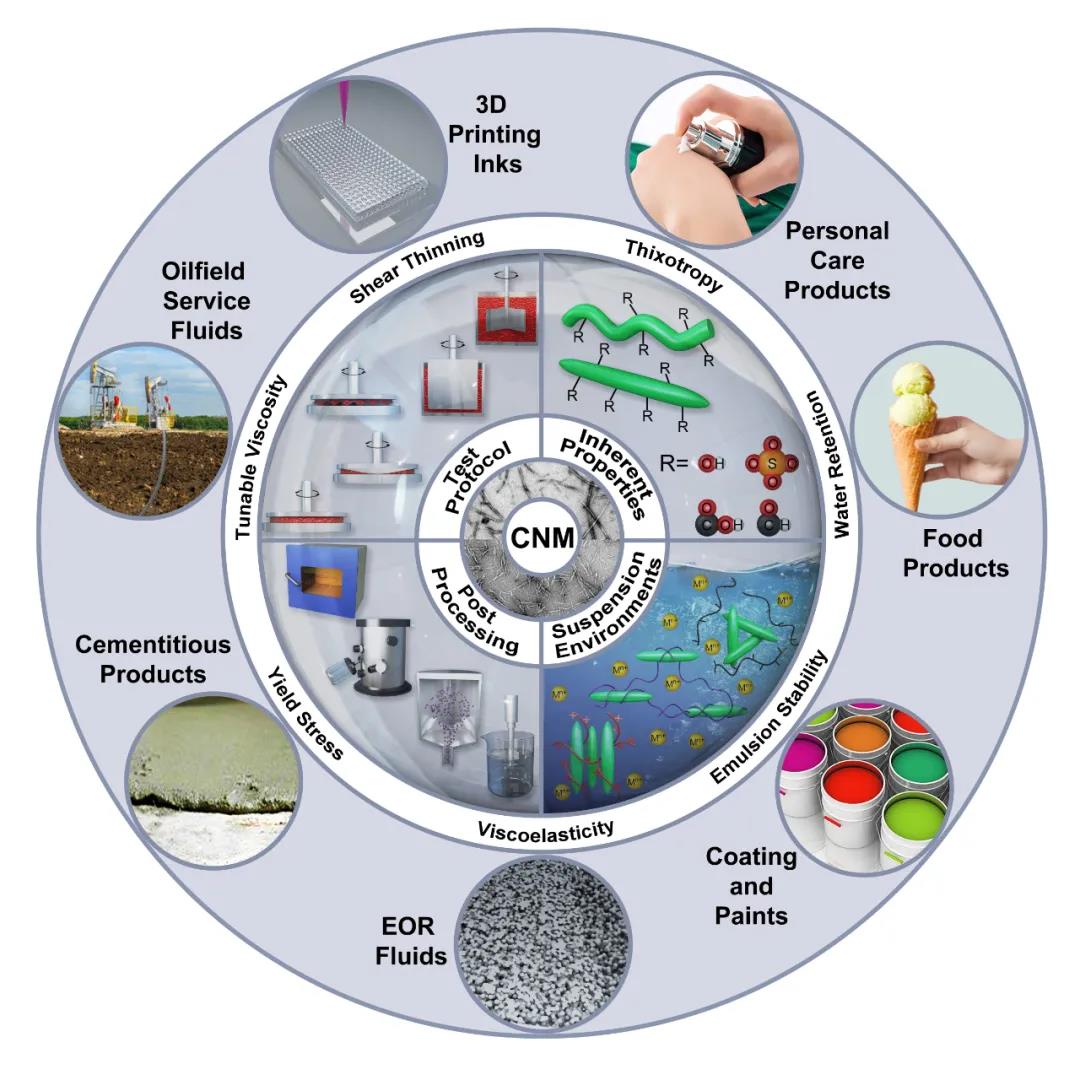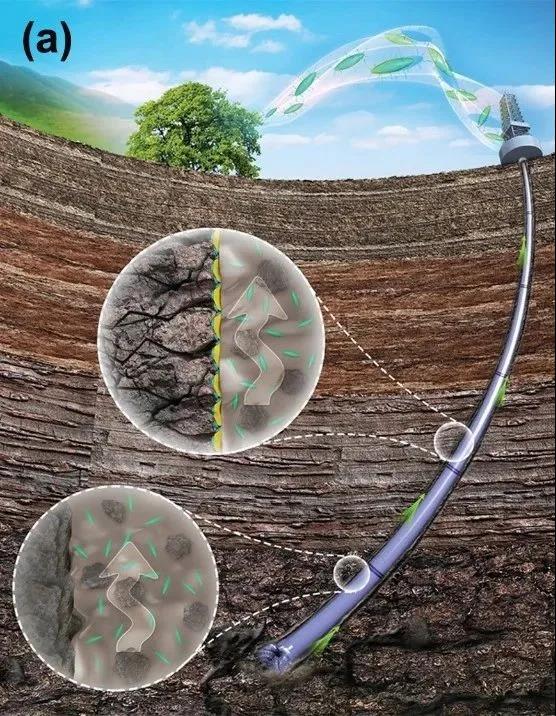
hotline:
17715390137
Tel/Wechat:
18101240246 (Technology)
0512-68565571
Email:mxenes@163.com (Sales Engineer)bkxc.bonnie@gmail.com
Scan the code to follow or search the official account on WeChat:
2D Materials Fronrier After paying attention,
click on the lower right corner to contact us,
Enter enterprise WeChat.
Professional Services Online

 Nano cellulose is a nano material extracted from natural fibers (wood, cotton, hemp, seaweed, etc.). Because of its renewable, biodegradable, high specific surface area, high aspect ratio, and excellent mechanical properties, it has been used in recent years. It has become a hot spot in global forest products and materials research. When nanocellulose is dispersed in a solvent, it can form a tangled three-dimensional network structure and chemical interactions (van der Waals force, hydrogen bond, electrostatic force, hydrophobic force, etc.) to generate viscous fluid. Under shearing action, nanofibers will be aligned along the shearing direction, showing shear thinning behavior. After removing the shearing force, it can quickly reshape the internal structure, restore viscoelasticity in a short time, and exhibit excellent thixotropy. Therefore, nanocellulose fluids exhibit excellent rheological properties, and their applications in the field of functional fluids have received more and more attention in recent years.
Nano cellulose is a nano material extracted from natural fibers (wood, cotton, hemp, seaweed, etc.). Because of its renewable, biodegradable, high specific surface area, high aspect ratio, and excellent mechanical properties, it has been used in recent years. It has become a hot spot in global forest products and materials research. When nanocellulose is dispersed in a solvent, it can form a tangled three-dimensional network structure and chemical interactions (van der Waals force, hydrogen bond, electrostatic force, hydrophobic force, etc.) to generate viscous fluid. Under shearing action, nanofibers will be aligned along the shearing direction, showing shear thinning behavior. After removing the shearing force, it can quickly reshape the internal structure, restore viscoelasticity in a short time, and exhibit excellent thixotropy. Therefore, nanocellulose fluids exhibit excellent rheological properties, and their applications in the field of functional fluids have received more and more attention in recent years.

Figure 1. Biomass-derived nanocellulose is a green, environmentally friendly and efficient rheology modifier
To this end, Professor Li Meichun of Nanjing Forestry University published a review article titled: Rheological Aspects of Cellulose Nanomaterials: Governing Factors and Emerging Applications in the journal Advanced Materials, which systematically summarized the rheological properties of nano-cellulose fluids and their 3D printing , Oil field chemistry, food and other fields of application research progress, and prospects for existing challenges and industrial application prospects.

Figure 2. The rheological properties, influencing factors and applications of nanocellulose fluid
This review first introduces the types of nanofibers (nanocellulose filaments and crystals), and summarizes the intrinsic relationship between the raw materials and preparation methods of nanocellulose, its size and surface functional groups; and the subsequent flocculation and lyotropy of nanocellulose fluids The liquid crystal phenomenon, shear orientation behavior, steady-state shear viscosity, and dynamic viscoelasticity are summarized, and the test scheme (mold geometry, shear rate, and recovery time), and the intrinsic properties of nanocellulose (concentration, size, and recovery time) are discussed in detail. Surface chemistry), the influence of external environment (ion concentration, pH, temperature, electromagnetic field strength and polymer interaction force) and post-treatment process (drying and redispersion methods) on the rheological properties of nanocellulose fluids; further on nanofibers The research progress in the fields of 3D printing, oil field chemistry, food, coatings, and personal hygiene products of the element fluid was summarized, and the interrelationship between the morphology, surface chemistry, rheological properties and application properties of nano cellulose was emphasized.

Figure 3. Application of nano-cellulose fluid in drilling engineering
Finally, the author points out that nanocellulose is a green, environmentally friendly, and efficient rheology modifier, but there are still the following challenges in its industrial application: 1) The economic cost is high, which is specifically reflected in the preparation, processing, transportation, and storage. 2) The diversity of nanocellulose, its size, crystallinity and surface chemical properties are greatly affected by the raw materials and preparation methods; 3) The instability of nanocellulose fluids, the external environment, etc. affect its viscosity and viscoelasticity Significant; 4) The uncertainty of long-term use on the human body and the environment. Based on this, the author recommends: 1) Fully characterize and control the size and surface chemical properties of nanocellulose to achieve the optimal rheological modification effect; 2) Use more stable, more uniform, and commercially produced nanocellulose to replace the experiment The nanocellulose prepared in the laboratory is subject to scientific research, so as to reduce the adverse effects caused by the inconsistency of nanocellulose properties; 3) Standardize the test method for the rheological properties of nanocellulose fluid; The common use of materials to improve its processability and functionality; 5) Establish a more standardized safety evaluation and management system for nanocellulose.
The first author and corresponding author of this article is Professor Li Meichun, School of Materials, Nanjing Forestry University, and the co-corresponding author is Professor Qinglin Wu from Louisiana State University, USA. This work was funded by the US Department of Agriculture Forest Service Fund, the Louisiana Department of Education Fund, the Jiangsu Distinguished Professor Research Startup Fund, and the Jiangsu Agricultural Science and Technology Independent Innovation Fund.
Article link:
https://onlinelibrary.wiley.com/doi/full/10.1002/adma.202006052

| Reminder: Beijing Beike New Material Technology Co., Ltd. supplies products only for scientific research, not for humans |
| All rights reserved © 2019 beijing beike new material Technology Co., Ltd 京ICP备16054715-2号 |